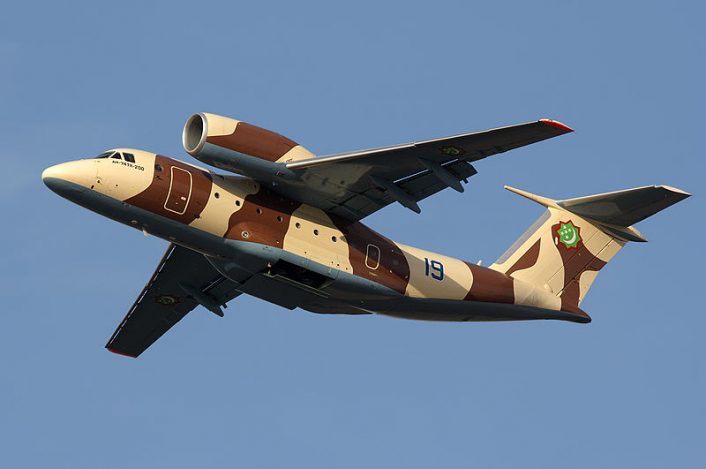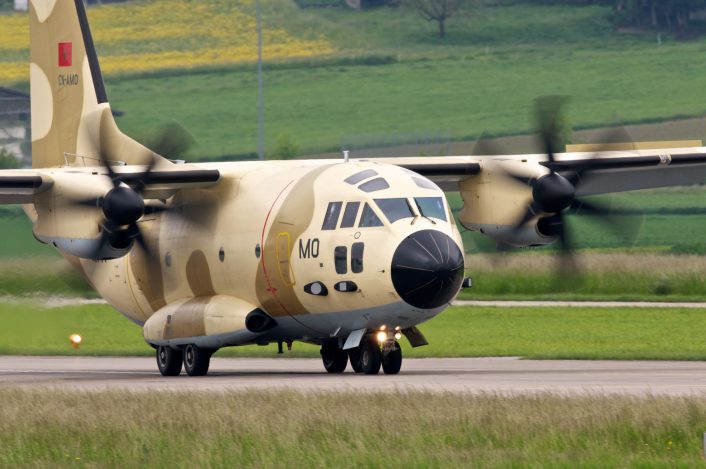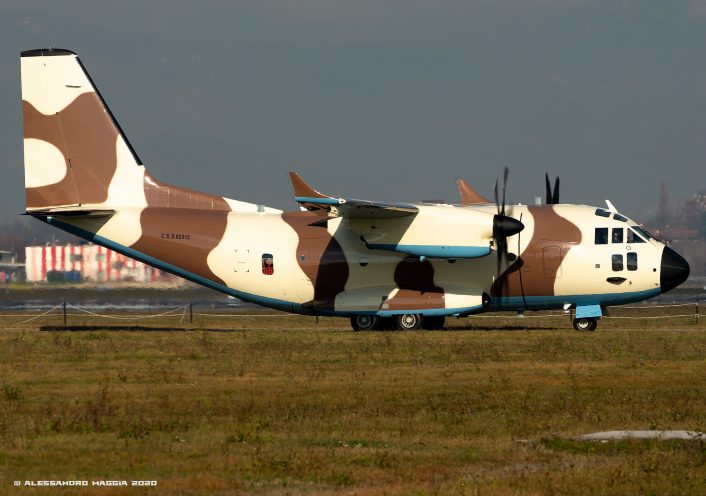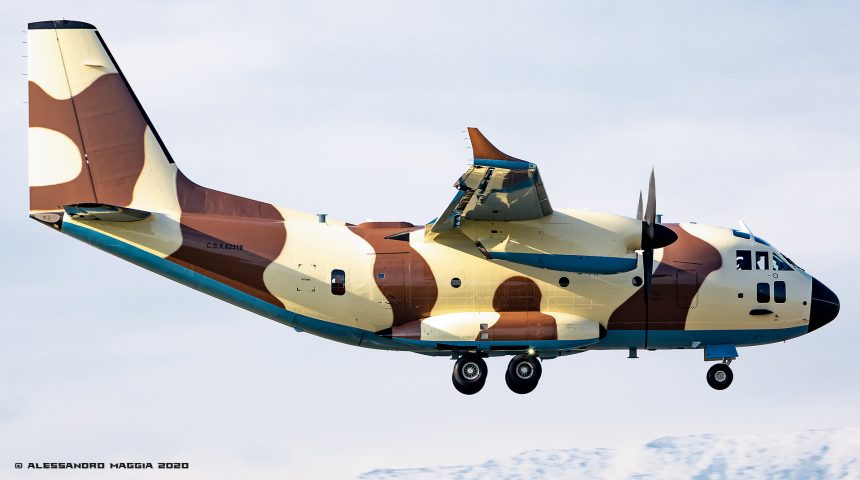The first C-27J Next Generation has flown with a new camouflage color scheme that may give a hint about the undisclosed first customer.
On Dec. 16, 2020, the first C-27J Next Generation, with experimental serial number CSX62319, flew for the first time from Turin Caselle airport, home of Leonardo’s facilities, sporting a brand new, quite “exotic” color scheme.
In fact, while still in its primer paint in the images released by Leonardo last month, the shots taken by photographer Alessandro Maggia at Caselle today show the Next Generation Spartan with a new two-tone camo scheme that may give a hint about the “undisclosed customer” which ordered the next generation Spartan and should be receive the first C-27J NG in 2021.
The dark and light brown colors seem to be those used by the Turkmenistan Air Force.

Indeed, in May 2018, both the M-346 advanced jet trainer and the C-27J tactical airlifter were showcased to Turkmenistan (and possibly selected, although no deal has been officially confirmed).
Turkmenistan either acquired or is evaluating M-346, C-27J, & C-295 aircraft, as well as FM-90 air-defense system pic.twitter.com/mHrsO9oQmU
— Derek Bisaccio (@DerekBisaccio) May 7, 2018
At the same time, even though the tone of the colors seems to be a little different, the pattern on the new C-27J NG (in terms of shape of the color stains) appears to be nearly identical to the one of the C-27J of the Morrocan Air Force. Take a look at the following photographs for a quick comparison:


While the actual customer is still uncertain and not officially released, some interesting details about the new aircraft have been made public by Leonardo and covered in details in our previous article published last month.
Here’s an excerpt:
The improved aircraft features new equipment, avionics and aerodynamic devices, most notably new winglets, that are intended to boost even more the performance and reliability of the Spartan.
After the announcement about the C-27J Next Generation, Leonardo published on its website an interview with the company’s test pilot Matteo Maurizio, Head of Project Test Pilot Airlifters, Special Versions and UAS, who has been involved in the development of the new variant of the Spartan since its first test flights. Here is how he describes the improvements:
The main differences relate to the aircraft’s flying qualities and performance. In terms of quality, I must stress that the new state-of-the-art avionics technology fully complies with the most up-to-date international standard, called Performance Based Navigation and to have in the cockpit new features as FANS1/A+ Datalink, TCAS 7.1, ILS Cat II and Enhanced Video TAWS. This enables us to exploit all the capabilities offered by the operation in civil air spaces with no limitations and to enhance interoperability in tactical military scenarios with the integration of Mode 5 IFF/ADS-B out, tactical VNAV and Search and Rescue.
The new cockpit layout includes five new Colour Multipurpose Display Units – featuring new and enhanced LED lighting and panels that increase pilots’ efficiency during a flight – a dual redundant Flight Management System, two Digital Autopilot-Flight Director Systems with auto-throttle capabilities, and a comprehensive communications suite. For intra-theatre operations, these features, coupled with the many large cockpit windows typical of the Spartan, full cockpit compatibility with NVIS/NVG night vision systems and Head-Up Display availability help to minimise pilot workload while increasing the ability to manage the mission effectively in day, night and adverse weather conditions.
In terms of performance, the new winglets offer us several advantages in terms of aircraft controllability, in particular flying at slow speeds, as well as better payload capability also in hot and high conditions.
While its cruising speed of 325 KTAS (602 km/h) and service ceiling of 30,000 ft (9,144 m) will not change with the new configuration, the winglets will improve the aircraft’s climb capabilities in terms of climb gradients or MTOW of approximately 1,000 kg. This will allow us to operate from those airports with particularly steep climb gradients, which are normally served by four-engine aircraft.
A big “Thank You!” to Alessandro Maggia for sending us the photos of the C-27J Next Generation with the new color scheme. Make sure to visit his Instagram account for more amazing photographs here: @alessandro_maggia_avphotos









